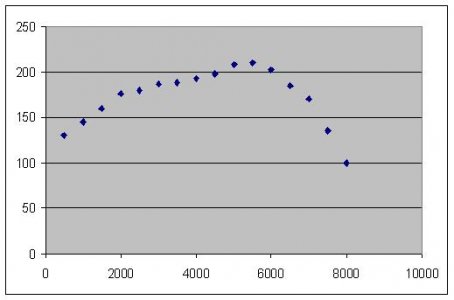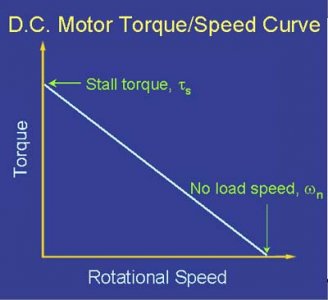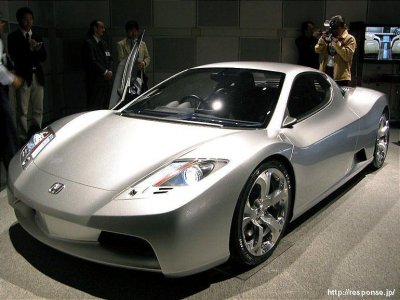-
Protip: Profile posts are public! Use Conversations to message other members privately. Everyone can see the content of a profile post.
You are using an out of date browser. It may not display this or other websites correctly.
You should upgrade or use an alternative browser.
You should upgrade or use an alternative browser.
New NSX Confirmed!
- Thread starter Jimbo
- Start date
I do not see your point, sorry. Neither one of these engines is as powerful as the NSX if I am reading the scales right, and have limitied RPM ranges for the "flat" regions.
BTW, here is an actual (not MS Paint) dyno plot from the 3.2 liter.

edit: Dammit Larry, you beat me to it
BTW, here is an actual (not MS Paint) dyno plot from the 3.2 liter.

edit: Dammit Larry, you beat me to it
Um - I don't know... Maybe it would burn insane amounts of rubber from a dead stop, but put down less and less torque as you build up speed?apapada said:would do at low RPM when the engine above would be combined with a motor whose torque curve looks like this:
I'm not discounting a hybrid drivetrain (I have confidence in Honda), but I don't follow the point you're trying to make.
- Joined
- 27 June 2003
- Messages
- 1,197
Ojas said:That does not look right. What's the source of that plot? Is VTEC working?
it is my understanding that the VTEC is working fine and that this graph represents data from a 1991-1994 Stock NSX 3.0 L 5spd Manual engine. I cannot remember nor quote where I got the data from (it was somewhere on the net, probably nsx prime).
- Joined
- 27 June 2003
- Messages
- 1,197
Ojas said:Um - I don't know... Maybe it would burn an insane amounts of rubber from a dead stop, but put down less and less torque as you build up speed?
close but not quite imho. It would indeed provide an instant enormous amount of torque but the reciprocal engine torque would take over as the RPMs build up since the DC motor would assist it less and less. I'm speculating that the system could be tuned to have a perfectly flat curve, at any RPM.
The World's Fastest Electric Car
Forbes magazine's look at AC Propulsion's tZero electric car.
Source: Forbes
[Oct 24, 2003]

AC Propulsion's tzero roadster is a reason to not give up on the electric vehicle. The tzero does 0 to 60 mph in 3.6 seconds, according to the company, and it does it on only 200 horsepower because of its light weight and torque.
The San Dimas, Calif.-based company says the tzero (pronounced "tee-zero," not "chair-o") has compared favorably in acceleration tests to Corvettes, Porsche 911s--and even a Ferrari F355, which it claims to have "out-accelerated...by eight car lengths" in one-eighth-mile drag races. If for nothing else, the tzero's $220,000 sticker price puts it in exotic-car territory.
The low weight helps make the tzero so quick, but its torque--the turning force that pulls it off the line--is just as important, if not more. Conventional internal combustion engines need to rev to a certain rate before reaching their peak torque, but the tzero's torque peaks instantly, with 183 ft-lbs. available from 0 to 5,000 rpm.
Of course, AC Propulsion, a specialist in electric vehicles, must realize that demand for electric cars has toppled. Ford Motor recently announced plans to discontinue the electric version of its Ranger pickup, and hybrids, diesels and hydrogen cars now seem like more viable alternatives to electric cars, whose customers have complained about their golf-cart powerplant noise and limited range.
Indeed, the tzero can only go 280 to 300 miles at 60 mph without recharging--even if it can recharge on any 120- or 240-V power socket. And if you accelerate it like an Italian exotic, or even take it on a hilly route, that range can decrease by up to about 20%.
The range has actually increased over time. AC Propulsion had made the tzero with lead-acid batteries since 1997, but this year released a revamped version with the kind of lithium-ion batteries used in laptop computers. The range, which increased to 280 to 300 miles from 100 miles per charge, now compares well with fuel cell cars.
But even if AC Propulsion claims the vehicle has efficiency equivalent to 70 mpg (and zero emissions), the tzero is, to a certain extent, an exercise in automotive fantasy. Its Spartan interior looks like a science project, in which most of the controls apart from the CD player are gadgets to monitor the battery and tiny 110-lb. motor. Drivers get an analog current meter, voltmeter, altimeter, and battery-voltage display with LED lights that measures temperature and charging limits.
Remember, though, this is more of an experiment than a traditionally appointed car. The tzero does not come with air-conditioning. And to lower its top and windows, you detach them and store them in the trunk. Talk about alternative energy expenditures.
Forbes magazine's look at AC Propulsion's tZero electric car.
Source: Forbes
[Oct 24, 2003]

AC Propulsion's tzero roadster is a reason to not give up on the electric vehicle. The tzero does 0 to 60 mph in 3.6 seconds, according to the company, and it does it on only 200 horsepower because of its light weight and torque.
The San Dimas, Calif.-based company says the tzero (pronounced "tee-zero," not "chair-o") has compared favorably in acceleration tests to Corvettes, Porsche 911s--and even a Ferrari F355, which it claims to have "out-accelerated...by eight car lengths" in one-eighth-mile drag races. If for nothing else, the tzero's $220,000 sticker price puts it in exotic-car territory.
The low weight helps make the tzero so quick, but its torque--the turning force that pulls it off the line--is just as important, if not more. Conventional internal combustion engines need to rev to a certain rate before reaching their peak torque, but the tzero's torque peaks instantly, with 183 ft-lbs. available from 0 to 5,000 rpm.
Of course, AC Propulsion, a specialist in electric vehicles, must realize that demand for electric cars has toppled. Ford Motor recently announced plans to discontinue the electric version of its Ranger pickup, and hybrids, diesels and hydrogen cars now seem like more viable alternatives to electric cars, whose customers have complained about their golf-cart powerplant noise and limited range.
Indeed, the tzero can only go 280 to 300 miles at 60 mph without recharging--even if it can recharge on any 120- or 240-V power socket. And if you accelerate it like an Italian exotic, or even take it on a hilly route, that range can decrease by up to about 20%.
The range has actually increased over time. AC Propulsion had made the tzero with lead-acid batteries since 1997, but this year released a revamped version with the kind of lithium-ion batteries used in laptop computers. The range, which increased to 280 to 300 miles from 100 miles per charge, now compares well with fuel cell cars.
But even if AC Propulsion claims the vehicle has efficiency equivalent to 70 mpg (and zero emissions), the tzero is, to a certain extent, an exercise in automotive fantasy. Its Spartan interior looks like a science project, in which most of the controls apart from the CD player are gadgets to monitor the battery and tiny 110-lb. motor. Drivers get an analog current meter, voltmeter, altimeter, and battery-voltage display with LED lights that measures temperature and charging limits.
Remember, though, this is more of an experiment than a traditionally appointed car. The tzero does not come with air-conditioning. And to lower its top and windows, you detach them and store them in the trunk. Talk about alternative energy expenditures.
The more I think about it, the more a hybrid powerplant makes sense.
With a whole flew of high perf cars and supercars out there now, it will be nearly impossible to make the NSX a standout with just good performance alone.
The first NSX was something very special for its time. It was a high performance exotic that had the reliability of Honda. It also showcased Honda's new technologies including independent 4 channel ABS, VTEC, traction control, etc.
If the NSX were to be released now with a sequential tranny, 400hp, great handling, and good looks - would it really be very special?
Now with a hybrid powerplant, Honda is able to do things the competition is not able to do:
1. With instant torque on tap, you no longer need to rely on VTEC. You can now build the car with only high RPM HP in mind. This makes it easier to get more HP per liter out of the car. I would think that 120 - 130 hp per liter would not be too difficult to attain since they already get 120 hp per liter with the S2000.
2. So take a 3.5 liter engine making say, 455HP (130HP per liter) then throw in 50HP - 100HP from an electric motor and now you have over 500HP. Plus, you get a lot of low end power from the electric motor AND all wheel drive - both of which will dramatically help exit speed.
3. Now, with the electric motor, the NSX is able to now also to give you better mileage. So you get this high HP car that will get you say, 30+ miles per gallon.
Just speculation of course. I personally wouldn't mind having a hybrid car. I'm sure Honda wouldn't create a hybrid sports car that runs out of juice at track events.
-J
With a whole flew of high perf cars and supercars out there now, it will be nearly impossible to make the NSX a standout with just good performance alone.
The first NSX was something very special for its time. It was a high performance exotic that had the reliability of Honda. It also showcased Honda's new technologies including independent 4 channel ABS, VTEC, traction control, etc.
If the NSX were to be released now with a sequential tranny, 400hp, great handling, and good looks - would it really be very special?
Now with a hybrid powerplant, Honda is able to do things the competition is not able to do:
1. With instant torque on tap, you no longer need to rely on VTEC. You can now build the car with only high RPM HP in mind. This makes it easier to get more HP per liter out of the car. I would think that 120 - 130 hp per liter would not be too difficult to attain since they already get 120 hp per liter with the S2000.
2. So take a 3.5 liter engine making say, 455HP (130HP per liter) then throw in 50HP - 100HP from an electric motor and now you have over 500HP. Plus, you get a lot of low end power from the electric motor AND all wheel drive - both of which will dramatically help exit speed.
3. Now, with the electric motor, the NSX is able to now also to give you better mileage. So you get this high HP car that will get you say, 30+ miles per gallon.
Just speculation of course. I personally wouldn't mind having a hybrid car. I'm sure Honda wouldn't create a hybrid sports car that runs out of juice at track events.
-J
I hope Honda folks read this thread,,please don't make the next nsx a slot car!I know you are designing a car looking forward but please listen to Rush's Red Barchetta about a hundred times before you decide on a hybrid!And give me a manual tranny option,Signed Archie Bunker.
- Joined
- 4 October 2002
- Messages
- 569
A hybrid will carry dead weight around the track within a few laps because the regenerative energy is best captured when braking is done slowly and over a long period of time. At the track, there is a lot of hard braking. It is done quickly and therefore not be able to build up enough charge to keep up with the demand. Hence, within a few laps, you are looking to haul around an extra 200 lbs of dead weight around a race track. This subject has been covered in the past.
The Honda Phantom V10 concept looks very exotic. If Honda wants to charge 90K for a sport car, it needs to be look exotic with enough ponies to back it up.
IMO, HSC look not look exotic and is more a like collage of mixed design cues that doesn't integrate well and lacks a harmonous theme.
The Honda Phantom V10 concept looks very exotic. If Honda wants to charge 90K for a sport car, it needs to be look exotic with enough ponies to back it up.
IMO, HSC look not look exotic and is more a like collage of mixed design cues that doesn't integrate well and lacks a harmonous theme.
If that HSC had the phantom V10 in there, it would sell like hotcakes!
Most tracks have at least a few corners that can not be taken at full throttle. Therefore, you could use that "unused" power to recharge the batteries.Originally posted by Silver F16 A hybrid will carry dead weight around the track within a few laps because the regenerative energy is best captured when braking is done slowly and over a long period of time. At the track, there is a lot of hard braking. It is done quickly and therefore not be able to build up enough charge to keep up with the demand.(snip)
Similar threads
- Replies
- 1
- Views
- 230
- Replies
- 7
- Views
- 559
- Replies
- 11
- Views
- 863








